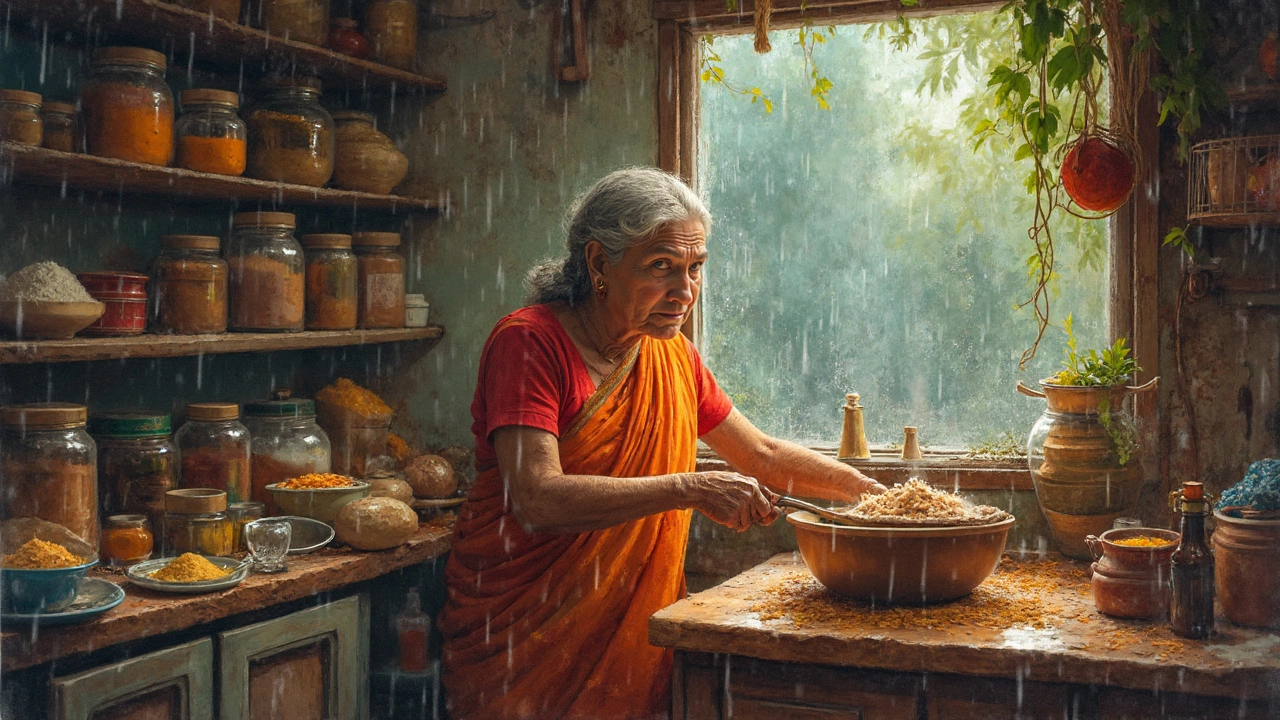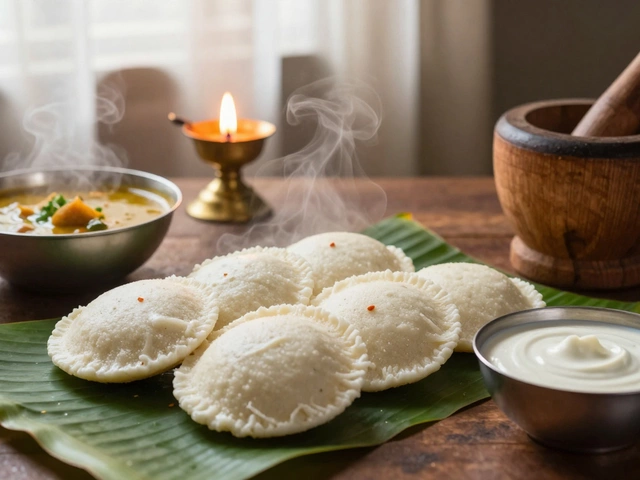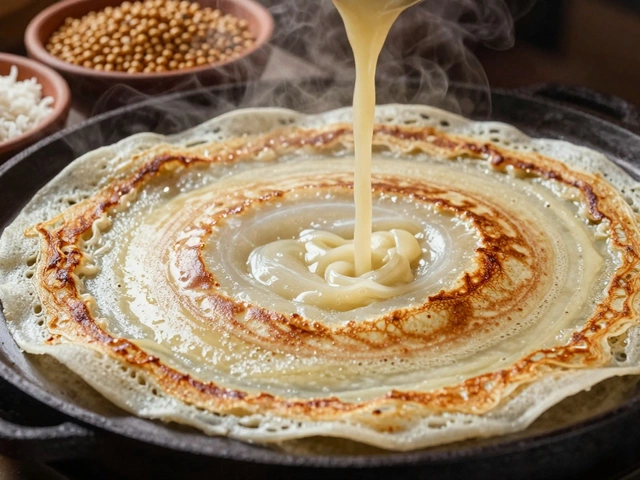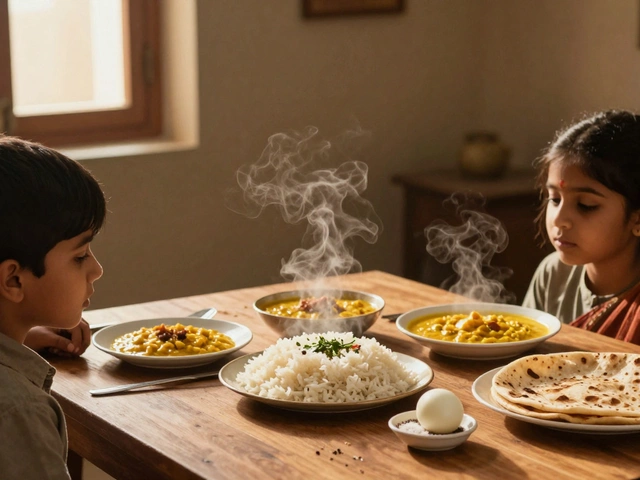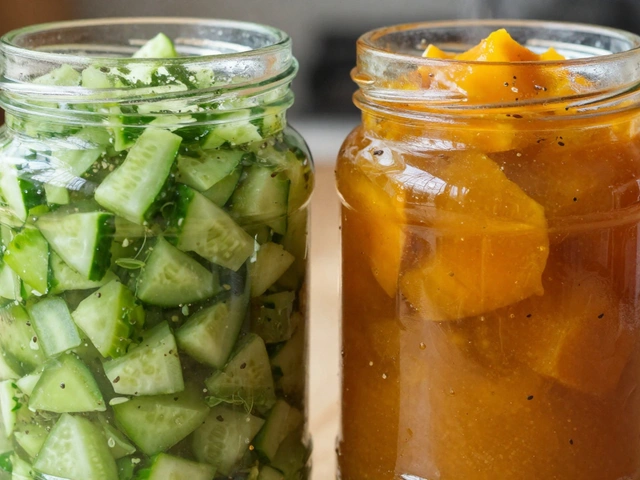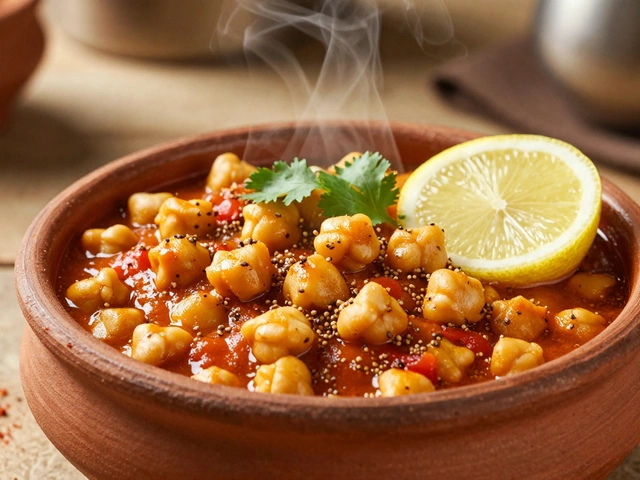Dosa batter fermentation is one of those not-so-secret keys to the magic of those crispy, golden-brown crepes called dosas. Typically, the batter needs to ferment somewhere between 8 to 12 hours. The exact time can vary depending on your kitchen's climate. Isn't it surprising how a simple thing like temperature can change how long you need to wait?
If you're in a colder region, you might find your batter taking its sweet time to rise, sometimes needing an entire day! In contrast, warmer places with higher humidity speed up the fermentation process, cutting that waiting time down considerably. Like my friend in Chennai always boasts, her batter's done even before she can finish binge-watching a series.
- Understanding Dosa Batter Fermentation
- Ideal Fermentation Time
- Factors Affecting Fermentation
- Tips for Perfect Fermentation
- Common Fermentation Issues
- Taste and Texture Impact
Understanding Dosa Batter Fermentation
If you've ever wondered why your mom's dosas are way better than your own, it's probably down to the fermentation process. It's not just about mixing rice and lentils together; it's an art that transforms these humble ingredients into something much more flavorful and nutritious.
Fermentation is essentially the result of a dance between yeast and bacteria naturally present in the environment and ingredients. This process boosts the batter's nutritional content by making nutrients more bioavailable, not to mention that signature tangy taste and airy texture.
Key Ingredients and Their Role
For basic dosa batter, we usually mix soaked rice and urad dal (a type of lentil). The rice gives you that crispy texture, while the urad dal gets all bubbly and fluffy when fermented. Together, they make magic happen.
Why Fermentation Matters
The fermentation time can significantly affect the quality of your dosas. Under-fermented batter may result in a bland taste and hard texture, while over-fermented batter can get too sour and may not cook properly on the pan.
Visual Signs of Perfect Fermentation
So, how do you know when your batter's just right? Look for bubbles and a slight rise in volume. It should feel softer to the touch, almost like a thick pancake batter that's alive and kicking!
| Region | Average Fermentation Time |
|---|---|
| Tropical | 8 hours |
| Temperate | 12 hours |
| Cold | 18+ hours |
Remember, the exact time will also depend on room temperature, quality of ingredients, and even the season. A slight dip in temperature can demand a few more hours for that ideal fermentation.
Ideal Fermentation Time
If you’re diving into the art of dosa making, nailing the ideal fermentation time can make or break your dish. Typically, you’re looking at a sweet spot of about 8 to 12 hours for the dosa batter to ferment. This timeframe usually ensures the right balance of flavor and texture that transforms a basic batter into the delicacy we all crave.
But let’s be real, not all kitchens are created equal. Here's where it gets interesting. The fermentation process isn't a one-size-fits-all. For starters, if you're living in a tropical climate, warmer temperatures naturally speed things up. In these balmy settings, your batter might be ready to go in about 8 hours, sometimes even less.
On the flip side, if you’re in a chillier area, brace yourself for a little longer wait time. Maybe around 12 hours or so. And don't think it's just outsiders’ issue! Even seasoned home cooks in colder regions often sneak in the oven-light trick—leaving the batter in the switched-off oven with the light on to create a cozy environment for those little yeasts to do their magic.
For the super curious, check out this simple reference guide to secure the optimal fermentation time based on different conditions:
| Climate | Fermentation Time |
|---|---|
| Tropical | 6-8 hours |
| Temperate | 8-10 hours |
| Cold | 12-14 hours |
So, how do you know for sure when it’s done? Well, a perfectly fermented batter doubles in volume, shows tiny bubbles on the surface, and releases a slightly tangy aroma. That’s the green light you’ve been waiting for.
Factors Affecting Fermentation
When it comes to getting that perfect dosa batter fermentation, several factors come into play. It's kind of like baking the perfect bread; a little attention can make a huge difference.
Temperature
Probably the biggest factor. The ideal fermentation temperature is around 86°F (30°C). If it's too cold, your batter might just sit there and sulk. Too hot, and it could get over-fermented, making it sour. A cozy warm spot, maybe near your oven or on top of a refrigerator, can sometimes be all you need.
Humidity
Humidity can speed things up, which is why people in tropical climates often have an easier time with fermentation. If you're in a dry area, consider keeping the batter in a closed room with a bowl of water next to it to create a slightly humid micro-environment.
Freshness of Ingredients
The age of your ingredients matters. Especially the urad dal; fresh dal contains enzymes that really kickstart the fermentation process. Check expiry dates and make sure your ingredients haven't been sitting in the pantry too long.
Water Quality
Believe it or not, the water from your tap can be a deal-breaker. Hard water might slow down fermentation. If the fermentation isn't happening right, try using filtered or boiled and cooled water next time. It's a small thing but can make a big difference.
Grind Consistency
Your batter's texture plays a role too. A medium grind, not too fine, not too coarse, seems to support ideal fermentation.
| Factor | Impact on Fermentation |
|---|---|
| Temperature | Optimal at 86°F (30°C) |
| Humidity | Speeds up the process |
| Ingredient Freshness | Fresher urad dal enhances fermentation |
| Water Quality | Filtered water is best |
| Grind Consistency | Medium texture supports fermentation |
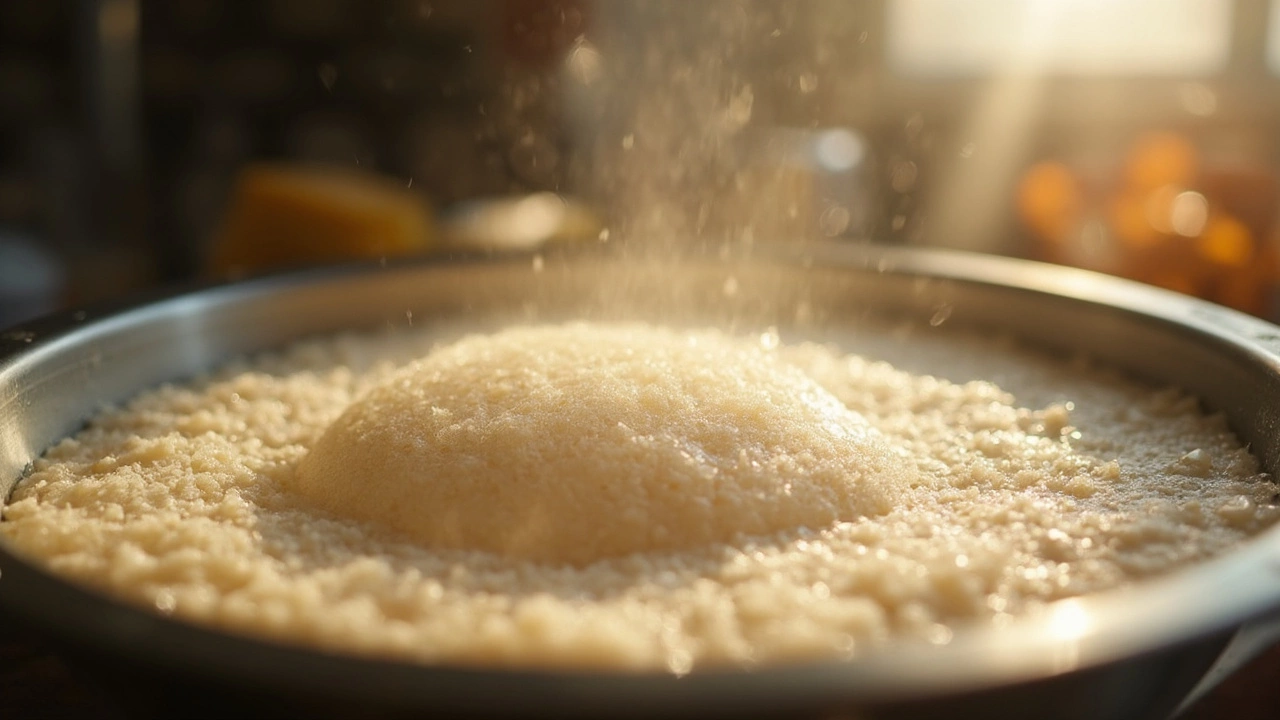
Tips for Perfect Fermentation
Getting that dosa batter just right is a bit of an art, and like all arts, there are a few tricks to keep in mind. Here are some tried-and-true tips that'll help you nail down the fermentation time for your dosa batter.
Use Fresh Ingredients
Always start with fresh ingredients. Old or stale ingredients can mess up the whole process. Fresh lentils and rice bring out the natural bacteria needed for proper dosa batter fermentation.
Get the Temperature Right
Your kitchen's temperature plays a big role. If it's cold outside or your kitchen is drafty, try putting the batter in the oven with just the light on. This simple trick can create a warm environment, just perfect for fermentation.
Consistency Matters
The batter's consistency should resemble pancake batter, not too thick or runny. This helps in proper fermentation, ensuring your dosas turn out crunchy on the edges but soft in the middle.
Add a Helping Hand
If you live in an area with a cooler climate, give your batter a little help. A tablespoon of soaked, cooked rice can act as a catalyst, speeding up fermentation in colder environments.
- Fermentation time is shorter in warm climates.
- Colder environments might need up to 24 hours or more.
- Keep your batter's temperature steady for consistent results.
Check the Container
Seems simple, but make sure you’re using a clean container. Any residual oil or soap can spoil your batter. Stainless steel or glass bowls are great options.
Monitor the Process
Keep an eye on the batter as it ferments. If it doubles in size and has a light sour aroma, you're all set. Over-fermented batter can taste too sour, so when you're uncertain, a quick sniff test usually does the trick.
Sticking to these tips is a sure way to get that perfect batter every time. Remember, practice makes perfect, and soon enough, you'll be impressing everyone with your dosa finesse!
Common Fermentation Issues
Even for seasoned dosa makers, fermentation can sometimes throw a curveball or two. The perfect fermentation time is not always foolproof and often varies with external factors. Let's dig into some common hiccups and how you can tackle them.
Batter Not Fermenting
You've left the batter overnight, only to find it stubbornly flat. What could've gone wrong? Well, in colder climates, the batter may need more warmth. Try wrapping it in a cozy blanket or use an oven with the light on for a warm environment without cooking it.
Over-Fermented Batter
Sometimes the batter gets ahead of you and turns overly sour. While this can add to the tang, too much fermentation can ruin the taste. Mix a small part of over-fermented batter with a fresher batch to balance flavors.
Too Thin or Thick Batter
Getting the consistency right is crucial. If the batter seems too thin after fermenting, just add some rice flour to thicken it up. Conversely, if it’s too thick, a splash of water should do the trick.
Unexpectedly Long Fermentation Time
If your dosa batter seems to take forever to ferment, check the quality of your ingredients. Using older lentils or rice can affect the process. Make sure you’re using fresh stuff to speed things up.
Here’s a handy overview of how climate affects fermentation time:
| Climate | Fermentation Time |
|---|---|
| Warm & Humid | 8 hours |
| Moderate | 10 to 12 hours |
| Cold | 12 to 24 hours |
By recognizing these issues early on, you can make adjustments promptly and save your dosas from disaster. After all, who doesn’t want perfectly fermented dosa batter every time?
Taste and Texture Impact
Fermentation does more than we think to the dosa batter. It's not just about the wait; it's about how that wait changes everything we love in dosas. Ever wondered why some dosas taste sour, while others are mildly tangy? It's all about the degree of fermentation.
During fermentation, the natural bacteria break down the carbohydrates in the batter, which not only makes the batter rise but also develops a characteristic sourness. This flavor development is essential for a classic dosa taste. If you're after that perfect balance between crispy and chewy, fermentation's your best friend.
Texture Transformation
Texture-wise, proper fermentation lightens the batter, creating air pockets that give dosas their crispy outer layer and soft, fluffy insides. When you pour that well-fermented batter onto a hot tava, hear that sizzle? That's the air expanding and working its magic. But if you rush it, or cheat with fermentation, you might end up with flat, lifeless dosas.
Trouble you might have experienced with non-fermented batter is the dense, doughy texture that just doesn’t hit the mark. The dosa's fluffiness is what keeps us coming back for more, and getting that just right hinges on letting the fermentation time do its thing.
Experimenting with Fermentation
- Try leaving the batter out a bit longer next time if you like them more sour.
- Shorten the time if swinging more towards the mild side.
- Remember, consistency is key; consider jotting down what worked and what didn’t in your dosa journey.
Eventually, understanding these nuances will not just improve your dosas but will make you appreciate the humble process of fermentation. It’s almost like a little transformation whisperer for your taste buds, working quietly through the night.
